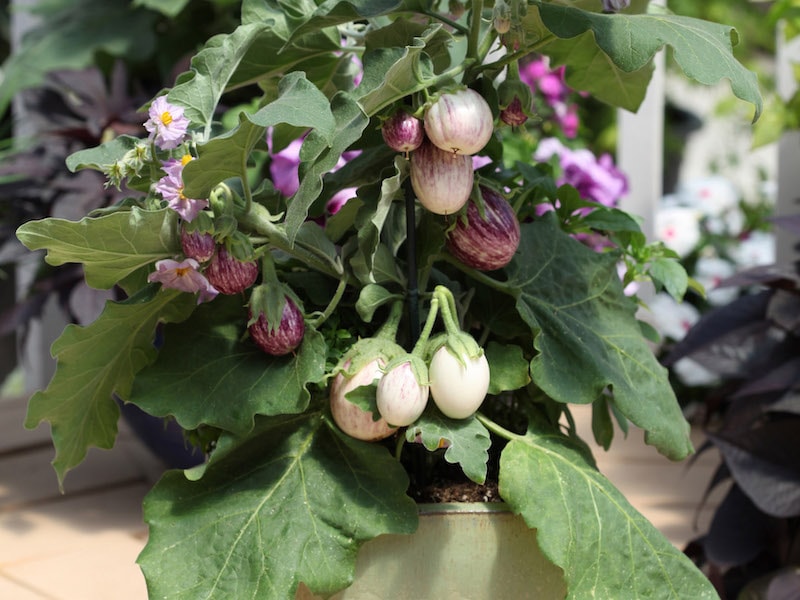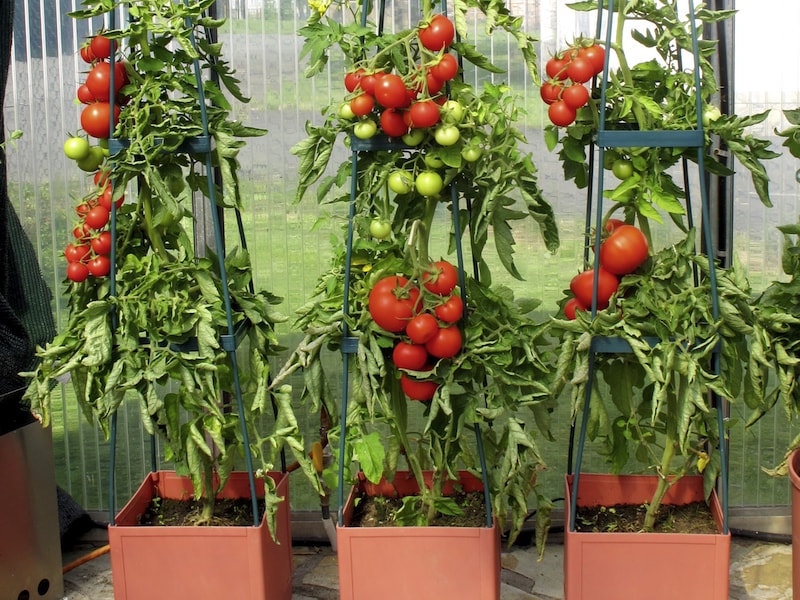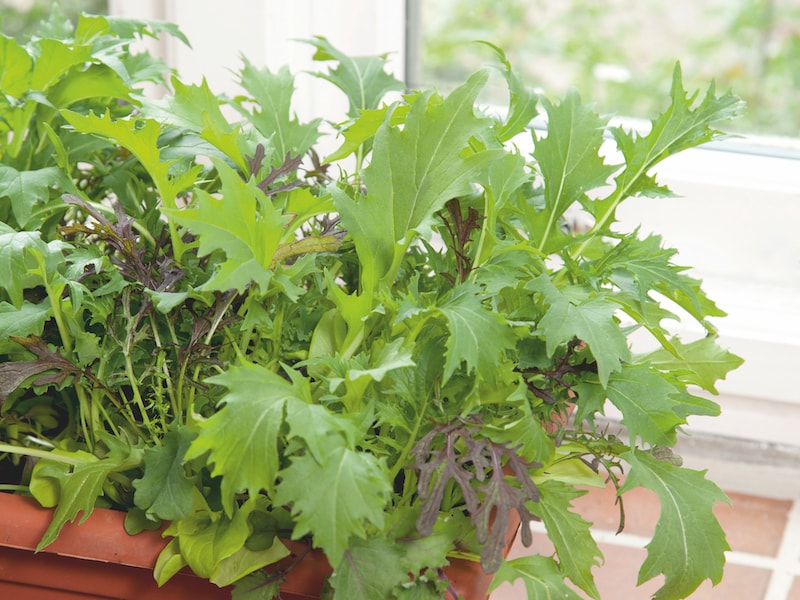You don’t need a large garden or allotment to grow your own veg, fruit and flowers. In fact, even if you have no garden at all, windowsill and balcony growing options mean you can still enjoy cultivating your own crops. Small space gardens are becoming increasingly common and, with this in mind, here’s our guide on the best way to produce lots of wonderful, healthy produce no matter where you live.
Browse our carefully curated range of veg seeds for small space gardens for inspiration.
Contents:
- Windowsill gardening
- Patio and balcony gardening
- Square metre gardening
- Space saving planters
- Top tips for small-space gardens
Windowsill gardening
One of the best ways to grow herbs is indoors on your kitchen windowsill. Warmth and sunshine help with germination and ensure vigorous growth, and growing this way means you’ll always have a plentiful supply of fresh herbs just when you need them.
If you’re looking for windowsill garden ideas, we offer a full range of seeds suitable for windowsill growing, including your favourite culinary herbs, salad leaves, microgreens, tomatoes and peppers.
Here are some of the best crops to grow on a windowsill:
Patio and balcony gardening

You can grow crops like aubergines on a balcony or patio
Image: Aubergine – F1 Pinstripe from Suttons
If you want to grow your own fruit and vegetables but worry that you don’t have enough space, a small balcony orpatio is all you need to get started. With the right mix of pots, planters and hanging baskets, even a small area can provide a flourishing veg garden.
To get the best yields, don’t forget to make use of your vertical space. Hanging baskets, stacked pots, trellis and frames allow you to grow maximum produce from every inch of soil. From growing vegetables on arches over pathways, to training cucumbers up chicken wire, you’ll find lots of expert tips on growing vertical veg in our article. And for container gardeners, see our guide to building a veg tower for another clever option.
Here are some of the best patio vegetable garden seeds to grow on a patio or balcony:
- Dwarf French Beans – Mascotte
- Tomato F1 ‘Big League’
- Sweet Peppers – F1 Mohawk
- Aubergine – F1 Pinstripe
- Carrots – Amsterdam Forcing 3
- Chilli Pepper – F1 Apache
Looking for more ideas? This list of 12 of the best vegetables to grow in containers was compiled by our expert allotmenteer Lee Senior, after being tried and tested over many years!
Square metre gardening
Square metre gardening is a great system for people who are just starting out or have small gardens. This highly organised method involves dividing a raised vegetable bed into nine squares, to achieve a small but intensively planted vegetable plot. Densely planted crops suppress weeds and, as long as you rotate your crops each year, you’ll enjoy a healthy harvest of veg.
Growing in such a small space involves successional planting and interplanting. It’s also a good idea to grow cut-and-come-again vegetables like kale and chard that give you lots of harvests from a single plant.
Here are some of the best square metre gardening vegetable seeds:
- Cauliflower – Di Sicilia Violetto
- Onion – F1 Santero
- Onion (Salad) – White Lisbon
- Beet (Leaf) – Bright Lights
- Bean (Dwarf French) – Compass
- Kale – Black Magic
Space saving planters

Dedicated tomato planters save space and make training the cordons and watering easier
Image: Self-Watering Tomato Towers from Suttons
Planters and containers are excellent because they work for every outdoor space. Own a balcony? Decorative planters enhance and maximise your outdoor growing space, while showing off your floral displays. Perfect for small space gardens, you could also try a planter with trellis to support climbing vegetables like beans, cucumbers, peas and squash.
If storage is an issue for you, try Vigoroot Pots and Planters. These very handy soft planters are manufactured from a special material which dramatically changes root formation and stops plants becoming ‘pot bound’. Vigoroot pots and planters are reusable and fold flat for easy storage. Suitable for vegetables, flowers, herbs and fruit, they’re made from recycled material – the 40 litre planter is especially suitable for growing potatoes and tomatoes in a confined space.
If the thought of growing several highly productive tomato plants on your patio, balcony or doorstep sounds attractive, our Self-Watering Tomato Towers are perfect for you. Also good for small greenhouses, these towers include a built-in 1.5m (5′) high support frame and a 2 litre water reservoir.
Top tips for small-space gardens

These sturdy, weather-resistant, and long-lasting raised beds are a great way to grow
Image: Original Veggie Bed from Suttons
- Rearrange your patio – include a dedicated growing area for hanging baskets and planters.
- Invest in a raised bed – this is basically a veg patch in itself.
- Window boxes – these make the perfect place to grow soft fruit, flowers, salad leaves and herbs.
- Vertical gardening – try mounting rows of gutters on a wall or add a trellis to grow things up. Climbing plants and trained fruit trees make full use of your garden walls and fences.
- Invest in containers – groups of ornamental planters look good and provide a useful place to grow crops.
- Choose the right fruit and veg for small spaces – opt for varieties that thrive in containers and don’t need much space to grow.
We hope we’ve given you plenty of ideas to help you make the most of your small space garden. For more practical advice, see our tips on small space veg growing and join the Suttons Gardening Club for regular discounts, timely tips and members-only deals.
Lead image: Speedy Leaf Salad Winter Mix from Suttons
Last Updated on October 20, 2025 by Suttons Horticultural Team





Hi Katie,
Thanks for the helpful tips from your blogs, also from the various videos from Rob, James and the lady from the video above.
I’ve followed Rob and James, also Peter’s work in the intervening years, who’ve all gone on to other (related) projects.
However I’ve never seen the aforementioned lady since, seems she made a few videos for Suttons ten years ago then poof she was gone! 😀
I’d be interested to know if she has any other gardening or planting/seeds related blog or video channel?
Her name was never listed (unlike the male presenters), so I’ve no idea where I could find her work.
Many thanks
Barry
Hi Mark, thank you for your kind comment. We are so please our blog has been helpful to you.
Best regards,
The Suttons Team
What an informative news letter. Thanks you have inspired me a lot.
Hi Ellen, thank you very much for your kind words and I am so pleased you enjoyed the small space blog. It’s really great to hear it has been useful to you.
Best regards,
The Suttons Team
The Small Spaces gardening blog is one of the most useful sections I’ve read on the topic. It is so clear and the suggested plants and herbs for each kind of space are especially helpful.
Thank so much to the member of Sutton’s staff who wrote it.